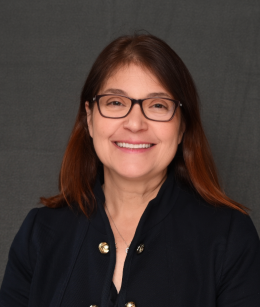Benefits of Referrals for Patients with Health-Related Social Needs

In a research letter recently published in JAMA Network Open, Eugenia (Genie) McPeek Hinz, Assistant DGIM Professor and Associate Chief Medical Information Officer for Duke University Health System and Physician Informatician, and colleagues developed a patient-centered metric known as the ‘successful connection rate’ (SCR) to assess meaningful outcomes for Social Drivers of Health (SDOH) referrals for patient needs across two time periods, one with federal funding for Community Based Organization (CBO) services and the other without. NCCARE360/Unite Us is the first state-based coordinated care network consisting of healthcare, government, nonprofit, and other organizations that facilitates connection to social resources and referrals. It includes more than 13,000 service listings and 26,000 service locations for most types of need across the state.
The study comprised of more than 80,000 referrals from the period (Oct 2020-March 2021), where referrals on NCCARE 360/Unite Us were supported by North Carolina’s Social Support Program supported community-based organizations and the second period (Oct 2021-Mar 2022) was not. The team observed no difference in the closed loop rate (number of cases closed /total number of cases) between the two time periods, suggesting successful utilization of the NCCARE360 technology platform irrespective of funding.
However, cases are marked as ‘closed’ regardless of whether patients actually received the referred resource/service. Thus, the SCR metric was developed to assess rate of benefit accrued to referred patients. The team’s analysis found significantly substantial differences in the SCR between the two cohort periods (65% vs. 38%). Notably, funding resources for the food domain are well developed for CBOs and the SCR remained consistent through both cohort periods (76% vs 71%).

“Without the necessary financial support, the best intentions of NCCARE/Unite Us and other similar state-based programs will fall short in impacting patient well-being and care,” noted Dr. McPeek Hinz. “We need to prioritize these programs given the huge impact of social factors on overall health.”
As of January 2024, the Centers for Medicare and Medicaid Services requires screening all inpatients >18 years old across five SDOHs: food, transportation, housing, interpersonal safety, and utilities. This screening initiative complements the ambulatory screening program that began in January 2021 and has successfully screened more than 300,000 Duke patients. The challenge now is automating connection to resources where possible, to meet patient’s needs, but also use care teams’ resources wisely for connection for other Health Related Social Needs (HRSN) that need more specific support. The HRSNs align with recognized social determinants of health identified in the Healthy People 2030 report: economic stability; education access and quality; health care access and quality; neighborhood and built environment; and social and community context. The report recognizes that need to address social determinants of health to improving the nation’s overall health and well-being and are the focus of several goals for the coming decade.
Citation: Johnson FS, McPeek Hinz ER, Regan D, Nohria R, Moon G, Spratt SE. Measures of Referral vs Receipt of Social Services Among Patients With Health-Related Social Needs. JAMA Network Open. 2024;7(4):e247021. doi:10.1001/jamanetworkopen.2024.7021 (